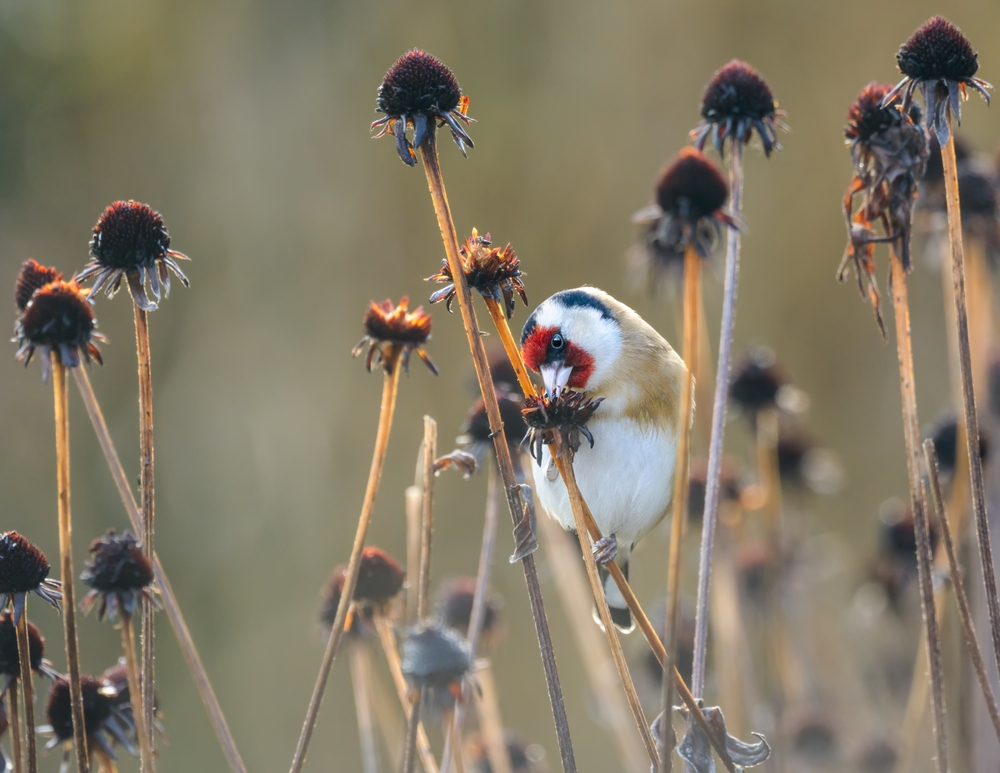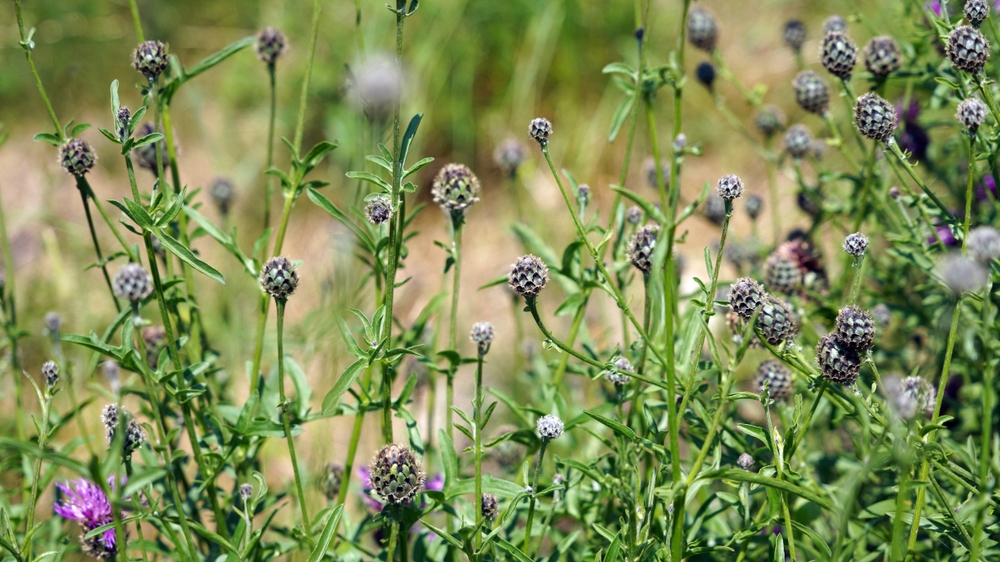
Image Source: Shutterstock.com
You’ve spent all summer nurturing your garden—watering, weeding, and admiring every petal. Now autumn’s rolling in, and your first instinct might be to tidy up, clip everything down, and start fresh for spring.
But hold your pruners for a second! Those dry, sculptural seed heads standing tall in your garden aren’t just leftovers from the growing season—they’re nature’s version of a buffet, bird feeder, and art installation all in one. Leaving them in place might just be one of the most rewarding, beautiful, and beneficial gardening “lazy hacks” you’ll ever embrace.
The Hidden Beauty of Decay
There’s something undeniably poetic about a garden in decline. As blooms fade and stems turn to bronze and gold, seed heads bring texture, contrast, and quiet drama to your beds and borders. Sunflower disks become natural sculptures, while the spiky silhouettes of coneflowers and alliums look like fireworks frozen in time. On frosty mornings, they sparkle with ice crystals like something out of a fairytale. Instead of a lifeless winter scene, your garden becomes a living painting—a reminder that beauty doesn’t disappear when summer ends, it just changes form.
The Feast You Didn’t Know You Planted
When you leave seed heads standing, you’re setting out a banquet for birds. Finches, chickadees, sparrows, and nuthatches will all flock to feast on your coneflower, rudbeckia, and sunflower seeds. Watching them dart from stem to stem adds life and motion to your garden even in the grayest months. You’ll notice their songs return long before spring does, creating a sense of liveliness that a trimmed garden simply can’t match. Think of it as free entertainment—one that keeps your backyard buzzing with energy when most others are silent.
Nature’s Recycling Program at Work
Here’s the cool part: seed heads don’t just feed the birds—they feed the soil. As they break down over winter, they return valuable nutrients to the earth. Instead of hauling all that organic matter away in yard bags, you’re letting it become part of the natural cycle again. The stems protect the soil from erosion, the decomposing seeds enrich it, and the spent plants become part of next season’s foundation. It’s like composting, but prettier and far less effort. Who said being eco-friendly couldn’t look this good?
Shelter for Tiny Garden Residents
While you’re admiring your winter garden from the window, dozens of small creatures are finding refuge in it. Hollow stems and dense seed heads become cozy hideouts for overwintering insects, including pollinators like bees and butterflies in their chrysalis stage. Spiders and beetles take shelter there too, helping control pests naturally when spring returns. By cutting everything down too early, you might be throwing out next season’s helpful residents. Leaving things a little wild means you’re giving nature a safe place to rest and recharge.
Free Seeds for Next Year’s Garden
Every gardener knows the thrill of finding a new seedling popping up where you didn’t expect it. Leaving seed heads in place often leads to pleasant surprises—self-sown plants that pop up naturally next year. It’s like your garden gifting you new life without you lifting a finger. Sure, not every seed will take, but the ones that do are often strong, adapted to your soil, and beautifully placed by the wind’s imagination. It’s a reminder that gardens are collaborations, not just creations.

Image Source: Shutterstock.com
Saving Time and Effort Without Losing Beauty
Here’s a little secret: gardeners who leave seed heads are not lazy—they’re efficient. By skipping the big fall cleanup, you save hours of work while giving your plants a more natural seasonal rhythm. Come spring, you’ll only need to cut things back once new growth begins to show, and by then, many stems will have already softened and composted themselves. The result? Less effort, more fertility, and a garden that transitions seamlessly between seasons. Mother Nature’s doing most of the work—you just get to enjoy the view.
How Frost Turns Everything Into Art
There’s a magic moment every winter morning when the garden transforms. A layer of frost dusts over the seed heads, and suddenly every dried stem and petal looks like it’s been dipped in crystal. Even the humblest weed becomes elegant. The low winter sun catches these frozen details, turning what might’ve been “dead” plants into glittering ornaments. For photographers and nature lovers, this is the kind of fleeting beauty that makes you fall in love with your garden all over again.
Supporting Birds When They Need It Most
Winter is tough on wildlife, especially birds. Natural food sources are scarce, and frozen ground means foraging becomes a full-time job. Those seed heads you left behind can make a real difference—offering energy, nutrition, and comfort during lean months. Watching goldfinches cling to dried coneflowers or sparrows hopping between sunflowers reminds you that even small choices can have big ecological impacts. You’re not just keeping your garden wild—you’re keeping it alive.
Breaking the Perfection Habit
Many gardeners feel pressure to keep their spaces perfectly neat, but nature thrives in a bit of chaos. Those uneven heights, tangled stems, and dried clusters might not look “tidy,” but they’re full of character. Perfection in the garden is overrated anyway—diversity and texture are what give a landscape life. By learning to see the beauty in imperfection, you start appreciating your garden as an evolving ecosystem rather than a manicured display. That mindset shift might be the most freeing gardening lesson of all.
A Year-Round Garden Without Year-Round Work
Leaving seed heads means your garden doesn’t “end” in fall—it just enters a new chapter. Instead of staring at bare soil all winter, you get a sculptural, dynamic landscape that changes with the light and weather. Birds visit, snow collects on stems, and you start to realize your garden never really sleeps—it just slows down. This approach turns a few extra months of interest into a full year of beauty and life. It’s not laziness—it’s wisdom.
Let Your Garden Be Wild and Wonderful
So the next time you’re tempted to grab the shears and tidy everything up, pause. Look closer at those dried seed heads glinting in the low light. They’re feeding birds, sheltering insects, enriching your soil, and reminding you that nature doesn’t always need your help to stay beautiful. Sometimes, the best gardening move is to step back and let the cycle play out.
Have you ever left your seed heads standing through winter? Share your thoughts, stories, or observations in the comments below.
You May Also Like…
- How To Get Free Seeds From The Government
- 8 Seeds That Germinate Better in Cold Soil
- 11 Plants That Self-Seed Perfectly in Fall
- From Seeds to Sprouts: The Ultimate Guide to Growing Herbs with These Top Picks
- 5 Fast Growing Seeds for Beginner Gardeners
Leave a Reply